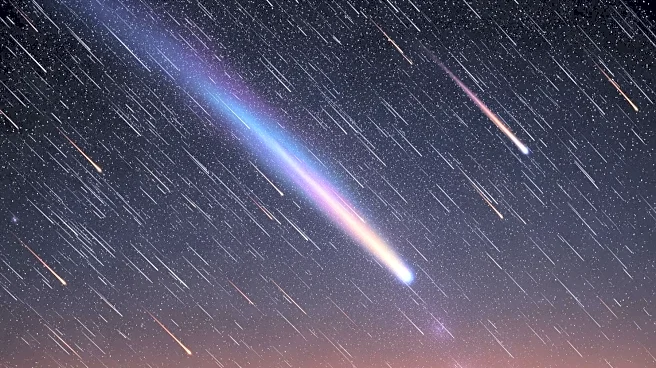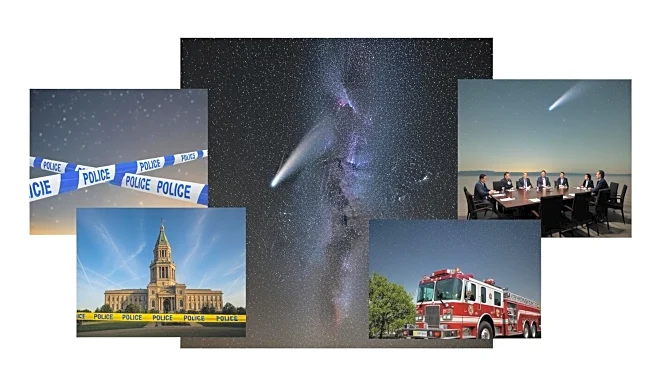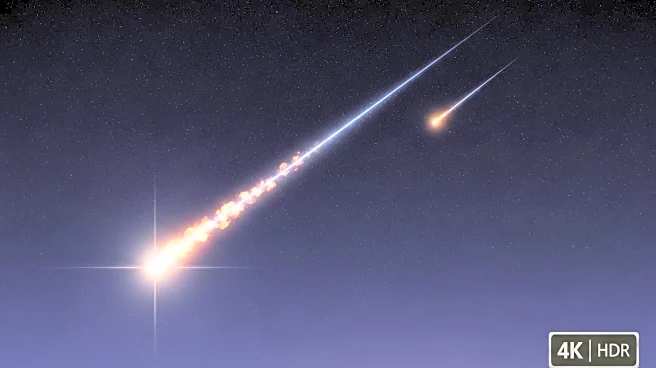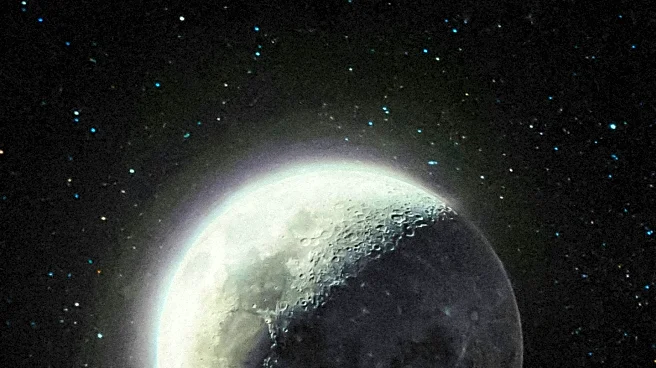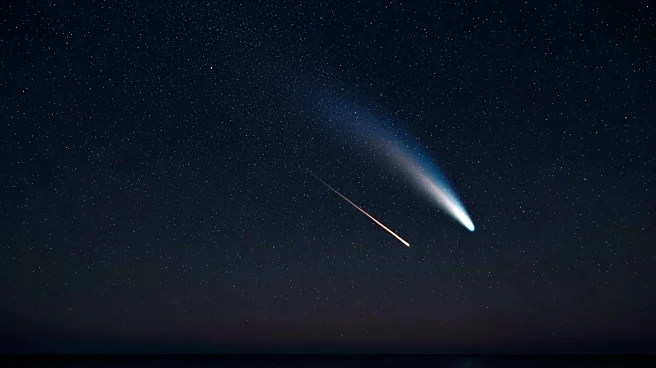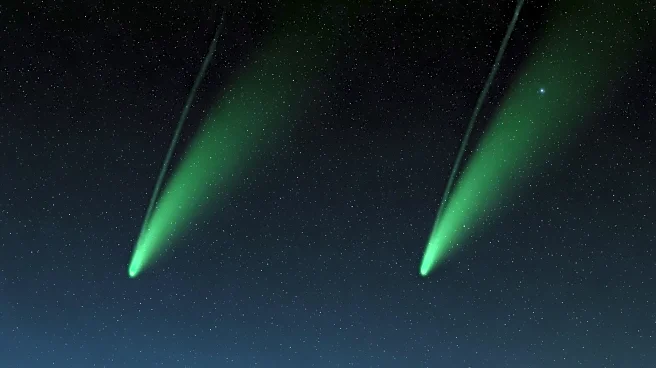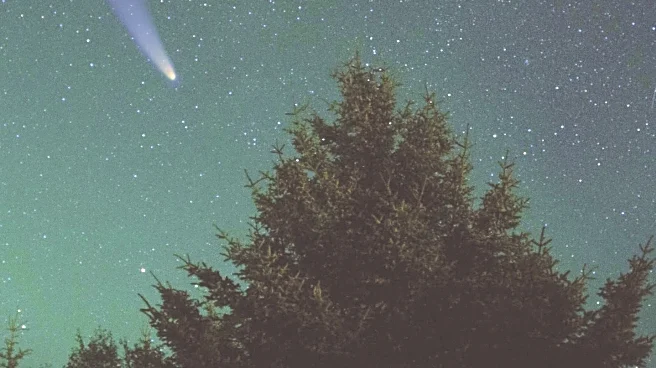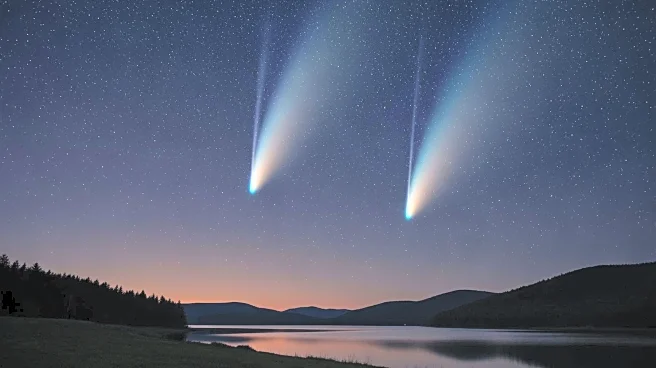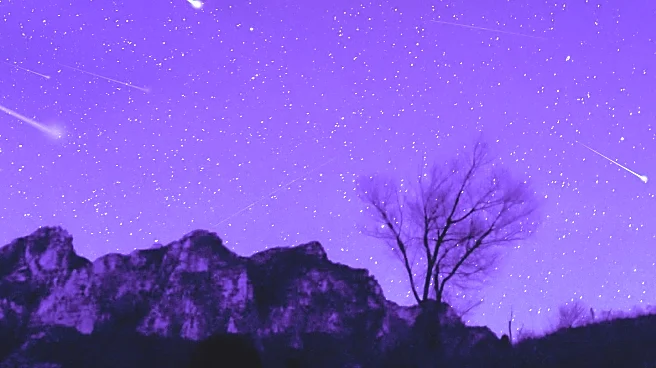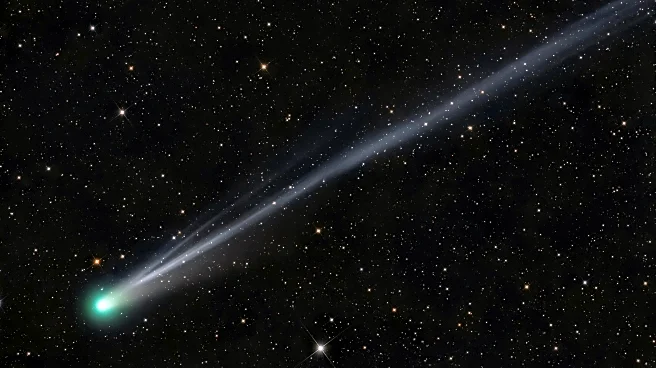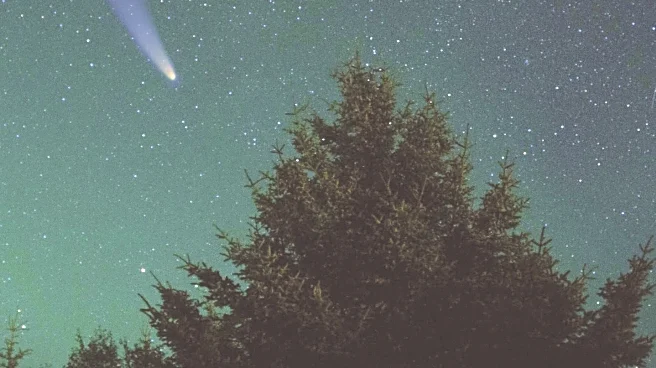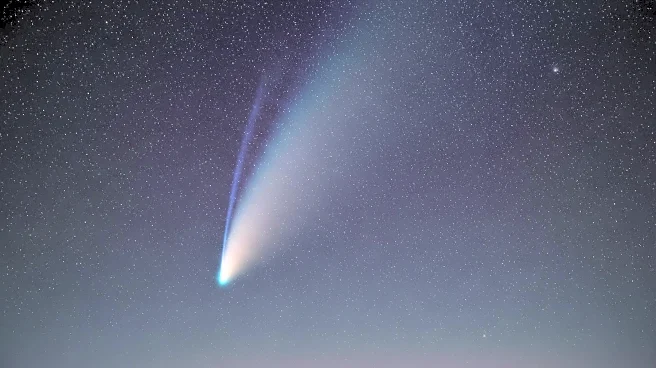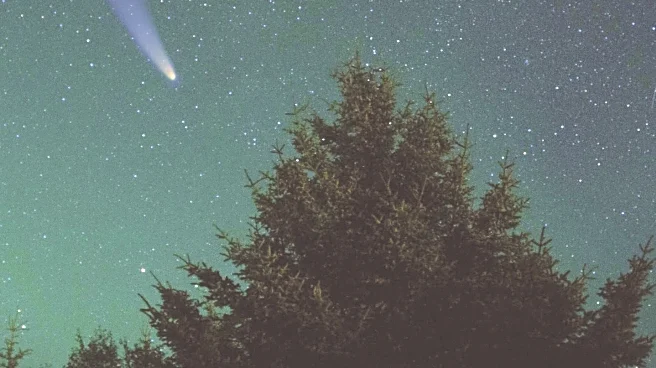What's Happening?
The Orionid meteor shower, caused by debris from Halley's Comet, is set to peak between October 20 and 21, coinciding with the appearance of two new comets, Lemmon and SWAN. The American Meteor Society notes that the shower will be visible from October 2 to November
7, with optimal viewing conditions due to a new moon. The Orionids are expected to produce around 20 meteors per hour, visible across the night sky. Comet Lemmon, discovered in Arizona, and Comet SWAN, identified by NASA's Solar Dynamics Observatory, will also be visible, offering a rare celestial event for stargazers.
Why It's Important?
This astronomical event provides a unique opportunity for both amateur and professional astronomers to observe multiple celestial phenomena simultaneously. The Orionid meteor shower is one of the most beautiful of the year, according to NASA, and the presence of two bright comets adds to the spectacle. Such events can inspire interest in astronomy and science, encouraging educational activities and public engagement with space exploration. Additionally, the visibility of these comets offers a chance to study their composition and behavior, contributing to our understanding of the solar system.
What's Next?
Skywatchers are advised to find dark, clear skies for the best viewing experience. The peak of the meteor shower will occur after midnight on October 21, while the comets will be best seen shortly after sunset on October 20. Observers are encouraged to use binoculars or telescopes for a clearer view of the comets. As the Orionids continue through early November, further observations may provide additional insights into the characteristics of Halley's Comet debris.
